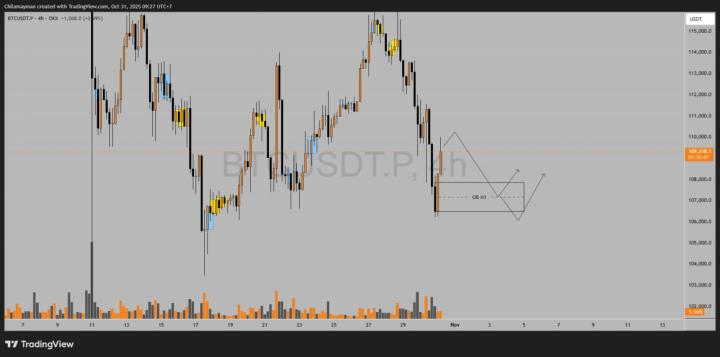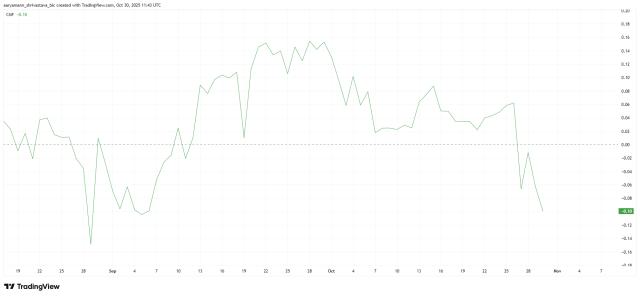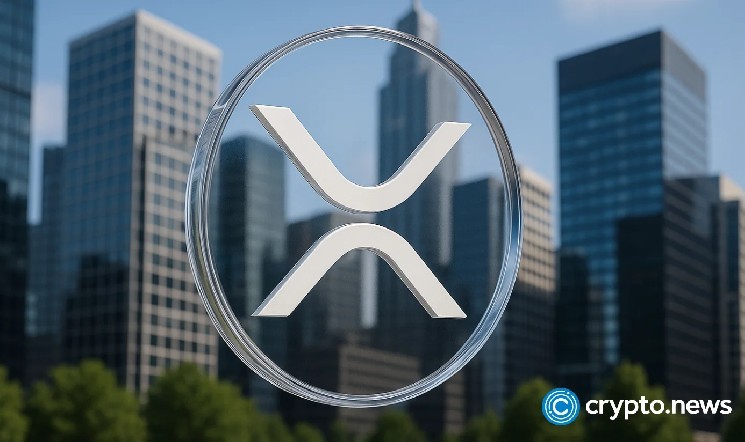From retail to credit: a trillion-dollar market divided by borders
In the real world, retail, e-commerce, payments, logistics, and consumer credit are often described as five parallel highways. While they occasionally intersect, they often operate at high speed on their own separate tracks. Walmart and Amazon compete for user access at the front end, Visa and Mastercard control global clearing, UPS, SF Express, and FedEx compete on timeliness and cost in fulfillment, and credit services like Klarna and Affirm collect bills only after purchases are made.
We believe that this fragmented pattern is a natural result of the long-term influence of technological conditions and institutional frameworks.
In fact, different business ecosystems have clear boundaries and profit distribution mechanisms. The cost of cross-border collaboration is extremely high, and it is difficult to truly connect data and rights.
In terms of market size, these tracks are all behemoths:
- Global e-commerce sales reached $5.8 trillion in 2023 and are expected to exceed $7.9 trillion in 2027;
- The global payment industry's annual transaction volume has already exceeded US$150 trillion;
- The logistics industry is close to $10 trillion, and supply chain finance is expected to reach $13 trillion by 2030;
- The total amount of global consumer credit exceeds US$30 trillion, of which BNPL in emerging markets still maintains an annual growth rate of more than 20%.
If these tracks achieve unified accounting of data, funds and rights on the chain, they will no longer just grow in parallel, but will form multiple levels of value amplification through synergy.
In the Web3 era, the asset chain and open collaborative network of blockchain technology are providing new breakthrough ideas for this situation.
It not only changes the way value is recorded and circulated, but also makes it possible for originally independent tracks to merge at the technical and incentive levels. That is, on-chain transactions can carry commodity prices, logistics status, delivery certificates and credit records at the same time; consumer points are no longer restricted to a single platform, but have the ability to circulate, pledge and even lend across scenarios; credit limits can be dynamically adjusted with real-time changes in on-chain transactions, without waiting for bank statements or manual approval, etc., which provides possibilities.
However, in fact, looking back at the Web3 hot spots in recent years, GameFi, DeFi, NFT and RWA have each ignited market sentiment, but they all lack a main channel that can precipitate real transactions, accumulate credit, feed back asset value, and connect them in depth.
- GameFi attracted tens of millions of players in 2021, but struggled to convert virtual assets into sustainable real-world value;
- DeFi's locked-in value in 2022 once approached $180 billion, but most of the funds circulated within the chain and lacked external economic injection;
- At its peak, the NFT market generated $25 billion in annual transaction volume, but has stagnated in terms of integrating physical goods with the supply chain;
- Although RWA is expected to become a trillion-dollar market, it is currently more concentrated in low-frequency assets such as government bonds, bonds and real estate, and fails to reach daily consumption scenarios.
In this context, PSP began to try to use consumption, the most universal economic behavior, as a breakthrough point and transform it into on-chain credit, assets and collaborative networks, hoping to eventually find a new balance among the multiple challenges of institutions, technology and user migration, and release a new round of Web3 market dividends.
PSP reshapes the industry landscape based on Web3
Focusing on PSP (Payment Service Provider), it is positioned as the core hub connecting merchants and payment networks, providing merchants with a complete set of transaction infrastructure such as acquiring, clearing, and risk control.
As mentioned above, in the traditional consumer model, upstream commodity distribution and supply chain links, as well as downstream user operations and financial services, are often separated from the payment system. This not only hinders the accumulation of data value, but also leads to high cross-scenario collaboration costs and low efficiency in cross-border transactions and consumer finance.
The PSP solution itself is based on the blockchain solution and is oriented towards Web3. It hopes to upgrade payments from a single funding channel to an on-chain programmable value network.
Through an on-chain PSP architecture, consumer finance modules such as payment and supply chain finance, loyalty points, and BNPL can operate on the same credit and settlement layer, enabling real-time mapping and automated settlement of capital flows, information flows, and credit flows. Smart contracts ensure transparent and enforceable rules. Cross-border settlements can reduce costs and shorten cycles by leveraging stablecoins and decentralized clearing networks. NFTs and on-chain identity systems can also enable cross-platform liquidity for loyalty and membership programs.
Under this new model, payment will become the economic hub that runs through the entire chain of production, circulation, and consumption. In this system, merchants can reduce operating and compliance costs, consumers can obtain a seamless cross-platform and cross-border experience, and the entire network will accumulate real on-chain credit and assets, and through DeFi, RWA and more Web3 scenarios, further provide sustainable infrastructure for the traditional world.
In the PSP system, the upstream includes acquiring merchants and brands that directly face transactions, and also extends to a deeper industrial chain, covering fulfillment links such as warehousing, logistics, and distribution, as well as various SaaS tools and data service providers such as ERP, CRM, and marketing automation.
Their core value lies not only in facilitating physical logistics but also in accumulating both structured data (such as SKU codes, inventory turnover rates, and fulfillment cycles) and unstructured data (such as the causes of logistics anomalies, marketing activity conversion records, and customer profile tags) that are strongly related to transactions. In traditional payment models, this data is often stored in a decentralized manner and difficult to access efficiently. However, in an on-chain PSP architecture, all data can be encrypted and written to the blockchain, forming verifiable and traceable credit credentials.
Taking cross-border contract fulfillment as an example, warehouse entry timestamps, logistics node scanning records, and delivery confirmations can all be uploaded to the blockchain, generating a complete data chain spanning production, distribution, and delivery. This not only enhances the real-time and trustworthiness of PSPs in risk control, settlement, and dispute resolution, but also provides high-quality raw material for on-chain credit profiling in Web3 scenarios. Leveraging smart contracts, this credit data can also be automatically leveraged in scenarios such as supply chain finance, decentralized trade financing, and RWA asset collateralization, achieving a seamless transition from transaction to financing.
Under this model, PSP can become a value hub deeply embedded in the upstream of the industrial chain and able to connect the off-chain and on-chain economies. While expanding the boundaries of ecological business, it also introduces real and verifiable industrial data flows to the entire Web3 financial infrastructure.
In the midstream of the industry, PSPs are no longer reliant on manual reconciliation and centralized clearing houses, instead enabling automated settlement through smart contracts. Funds flow is secured by on-chain atomic execution, with transaction vouchers and ledger updates synchronized, ensuring real-time confirmation of every payment and transfer of assets. This fundamentally eliminates the T+1 or even longer settlement delays often associated with traditional systems.
At the same time, PSPs leverage infrastructure such as cross-chain bridges, Layer 2 Rollups, and modular settlement layers to facilitate circulation and matching across multiple chains. This means that cross-regional payments, cross-asset settlements, and the exchange of stablecoins for fiat currencies can all be accomplished within a broader and more efficient network, truly achieving unified global settlement.
More importantly, the core value of the on-chain midstream lies in its programmability.
In traditional clearing systems, fund transfers are often rigid "single-line operations" that are difficult to carry complex business logic.
Under the on-chain architecture, PSP can superimpose conditional rules through smart contracts:
For example, in cross-border payments, RWA (such as accounts receivable, warehouse receipts, and real estate rights) can be used as collateral to trigger instant financing; in B2B payments, limits and credit lines can be automatically adjusted based on on-chain identity credentials; in C-end consumption, combined with on-chain credit scores, BNPL (buy now, pay later) or installment settlement can be dynamically triggered, and it will become an open financial interface between DeFi protocols, stablecoin ecosystems, and institutional payment networks.
As a result, the midstream PSP segment is gradually transforming its role: evolving from a "cost center" to a new "value center." As a value network that carries value-added services, the PSP's positioning has gone beyond being a simple payment service provider. It also serves as a natural liquidity bridge connecting digital assets and traditional finance.
This bridge effect is expected to enhance the elasticity and scalability of the payment network, and also open up a new growth curve for PSPs, that is, under the premise of compliance and transparency, making payment itself an important entry point for the emergence of new financial services and asset circulation.
Based on this, PSPs are building a comprehensive network capable of serving multiple roles, including B2B merchants, cross-border logistics and service nodes, institutional investors involved in consumer finance, and financial institutions providing settlement and clearing services for on-chain assets. Each link consumes, produces, or transforms value, returning it to the PSP's core network.
Overall, PSP can serve as both a liquidity layer for funds and a general ledger for data and rights. With the trend of on-chainization, this "dual bus" model is expected to become the central nervous system of future consumer networks.
PSP's scarce niche in the Web3 world
Judging from the current Web3 ecosystem, the mainstream entry points for users still remain in two dimensions.
One is exchanges. Platforms including Binance, Coinbase and OKX are still the first stop for most people to come into contact with digital assets. They undertake the core functions of depositing and withdrawing funds, liquidity aggregation and asset pricing.
The second is the public chain: Ethereum, Solana, and BNB Chain represent the infrastructure for development and application. They rely on ecological effects, compatibility, and tool chains to gather the largest developer community.
However, the truly high-frequency entry point that is close to daily consumer behavior remains a blank that no one has touched.
We see that, whether it is the attempt of payment wallets or the expansion of NFT e-commerce and blockchain games, none of them have been able to break through the ceiling of "low-frequency use".
In comparison, the number of global retail payment transactions is dozens of times that of financial asset transactions.
According to World Bank statistics, retail payments alone account for tens of billions of transactions annually, while stablecoin transfers in 2024, even at peak times, will only reach tens of millions per day. In other words, Web3 still lacks a true entry point in the scenario that best reflects the "migration of lifestyle habits."
As Clayton Christensen emphasized: "The key to competition is not the product, but whether it can be embedded in the daily behavior of users." Therefore, whoever can occupy the high-frequency consumption entrance will hold the initiative in user migration.
The scarcity of the PSP ecosystem lies in its ability to operate beyond a specific use case. By facilitating real, high-frequency consumer transactions, it continuously builds on-chain liquidity and verifiable credit. For example, seemingly trivial transactions like micropayments in cross-border e-commerce, periodic deductions for online subscriptions, or daily settlements for retail merchants, once migrated on-chain, create continuous, reliable cash flows and credit credentials. This is a user structure that crypto-native DeFi/DEX platforms struggle to reach, as the latter primarily attract asset-driven speculators rather than real, consumer-driven users.
PSP is also putting consumer entrances on the chain, which naturally has a cross-track spillover effect.
In the PSP system, the credit data accumulated from payment behavior can be directly extended to the BNPL (buy now, pay later) model, user points can be assets that can flow freely across platforms, and behavioral data such as consumption frequency and transaction habits can reversely empower insurance modeling and investment decisions.
Keynes once said: "Credit does not grow out of banks, but out of transactions."
In the on-chain environment, PSP just takes on this role, opening up a collaborative path between the five major traditional financial tracks of payment, credit, points, insurance, and investment, and building an unprecedented channel for user migration and value accumulation.
PSP's multi-dimensional growth engine
In fact, PSP is trying to build a compound growth engine through multi-layer superposition.
It extends RWA's ownership confirmation and benefit mapping to consumption scenarios, integrates DePIN's physical nodes into the payment chain, embeds AI's intelligent modeling into the risk control and credit assessment system, and supplements it with the two-way connection between payment and wallets and the retention cycle of the loyalty credit system.
This design enables PSP to build a self-sustaining system, maximizing the liquidity of on-chain assets while allowing them to enter the most active new consumption channels. Furthermore, this multi-dimensional architecture is resistant to cyclical fluctuations. Even if a single sector experiences a downturn, the other modules can still support the overall growth of the system. This "complex narrative" embodies Albert Hirschman's view in "The Strategy of Economic Development": "Diversified growth paths mitigate risk and create robust systemic returns."
On this basis, PSP is becoming a cross-industry system connector.
It uses payment as the entrance and weaves the five major digital economy tracks, including e-commerce/consumption, logistics/supply chain, finance, and content/entertainment, into a complementary and symbiotic network. For the first time, the flow of funds, goods, assets, and information has achieved a unified closed loop on the chain, and the payment narrative has thus had the possibility of competing on an equal footing with the traditional system.
From the perspective of the macro market, this cross-track blue ocean market connecting the entire digital economy:
The scale of global consumer payments exceeds tens of trillions of US dollars, the annual demand for supply chain finance has long entered the trillion-dollar level, and the growth of e-commerce and content entertainment is still releasing dividends from population and consumption upgrades.
Therefore, for PSP, it not only has the backing of a trillion-dollar blue ocean market, but is also in a rapidly growing new track. Backed by the market size and blue ocean dividends of the global digital economy, PSP's positioning also indicates that it is expected to become a key link connecting the five major tracks in the future.
Why $PSP is a long-term asset
Focusing on the core assets of the PSP ecosystem $PSP, it has the typical attributes of a "long-term asset".
Scalability is a natural advantage of the PSP system. Starting with payment, a high-frequency, essential application, as consumption scenarios and user base expand, the frequency of $PSP token usage and deposited value will grow in direct proportion. Every new merchant and every cross-border transaction will continuously strengthen the value capture path of $PSP, naturally amplifying it with user network effects.
The replicability of the PSP ecosystem also ensures its highly leveraged growth model. We've seen that merchant systems across different regions, cross-border e-commerce networks, and supply chain finance scenarios across vertical industries can quickly reuse PSP's infrastructure. Whether it's small payments for local merchants or large-scale settlements for cross-border e-commerce, $PSP can serve as a unified value intermediary, with unlimited market expansion capabilities.
The PSP ecosystem's credit system, risk control capabilities, and user retention together form a network moat. This means that $PSP token holders are also co-builders of the network's credibility. When the ecosystem forms a trust-based credit accumulation and consumer stickiness, user migration costs will increase significantly, naturally strengthening the platform's defenses and making it a difficult-to-replace infrastructure.
Therefore, we have reason to believe that $PSP can both compete with financial institutions like Affirm and Klarna, capturing value in consumer lending, settlement, and installment payments; and infrastructure projects like Helium and IoTeX, accumulating long-term assets through underlying connectivity across multiple scenarios and chains. For investors, this means that $PSP not only has the cash flow valuation logic of fintech, but also possesses the scale premium of infrastructure networks, presenting a unique valuation opportunity characterized by the superposition of multiple industry models.
Looking further, $PSP also possesses other long-term asset characteristics, including:
- Policy dividends and compliance paths: With the improvement of the stablecoin bill and payment compliance framework, PSP-type tokens will be further legalized under policy promotion, providing certainty for the large-scale entry of institutional capital.
- Asset Sedimentation and Liquidity Value: $PSP can be used as an anchor for collateral, credit credentials, and network liquidity. It is continuously locked and used in financial derivative services, forming a stable "on-chain treasury."
- Network spillover effect: As a payment token, $PSP will naturally extend to e-commerce, supply chain, content entertainment and other fields, gradually building a "cross-industry value capture" pattern and avoiding dependence on a single application.
In summary, $PSP's value proposition is a long-term asset whose value is continuously strengthened by network effects, consumer scenarios, and accumulated credit. In the future, it leverages the vast blue ocean of the global payments and consumer markets while also capitalizing on the scarce benefits of Web3 infrastructure. It has the potential to become a "connector across five major sectors," making it a rare, long-term, and valuable asset for investors.
Summarize
Overall, PSPs are reshaping the infrastructure of Web3 consumption, spanning five key sectors: payment, consumption, e-commerce, logistics, finance, and content entertainment, becoming the "traffic and credit hub" of the entire digital consumer economy. As the ecosystem continues to expand, PSPs will gradually evolve into cross-industry connectors, bringing together users, merchants, and capital on the same value chain. This represents a trillion-dollar blue ocean market that has yet to be fully tapped, with unlimited potential.






